The fact that every self-respecting company now has its own individualized pushbuttons is almost a matter of course. While it used to be Razer who created their own green switches based on Kailh’s orange ones (modifying the color of Stams was just the beginning), it’s now common practice to “treat” yourself to your own product line. Already four years ago, the first “opto-mechanical” buttons traded up and I still remember well the Computex 2016, when I could also water such a keyboard once myself. Light barrier and a clean optical release instead of possibly bouncing mechanical contacts was the buzz word back then and it is here.
Corsair’s OPX pushbuttons also belong to this category and generate a trigger pulse by interrupting a light barrier when the button is pressed in. This is done with absolute precision and without contact problems such as bouncing or a variable contact resistance of possibly partially oxidized surfaces. This allows the triggering torque to be defined much better and, above all, more cleanly, and the service life is now also determined by factors other than the very susceptible contact surfaces, as can be seen from the predicted 150 million impacts (instead of the 30 to 50 million purely mechanical pushbuttons).
With only 3.2 mm of travel, these linear styli are at the lower end of the scale, which makes them quite fast per se. the trigger point is already reached after approx. 1 mm, i.e. very early. Normally this is around 2 mm and even more. The release force, on the other hand, has remained at a similarly high level, with a resistance of 45 grams. However, less travel until release and a more aggressive, much earlier release characteristic of the buttons can also lead to irritation.
The chance of mistyping or triggering incorrectly or unintentionally is quite high, especially during the familiarization phase. I almost gave up on this when I was writing it, because it really is a motor challenge first. I didn’t notice it so clearly when playing, on the contrary. With a little familiarization, you should even be able to act in a more relaxed and power-saving manner. Leisure and gambling yes, work probably rather no. In the meantime I get along quite well, but for 10 fingers it is rather nothing.
Well, and besides, such an individualization also contributes to the feeling of having, including brand loyalty, and the price is also relativized by other features. For example, there are the 105 key caps of the primary pushbuttons made of PBT (polybutylene terephthalate), a high-quality thermoplastic. you can see on the photo also the very high wall thickness of 1.5 mm, which marks qualitatively the upper spearhead of the sensible. All other caps, including those of the macro keys on the left, are made of simple ABS The chosen font is ok and well readable, but the halos between the buttons are extremely annoying.
I will write something about the individualization by the iCue software later, at least one can also exchange some important keycaps. The transducers are MX-compatible, so that other customs can certainly fit, even if there could be conflicts with the trough and the dimensions (but not necessarily).
And for those who are already hungry for RGB, here is a snapshot with a quick color change:















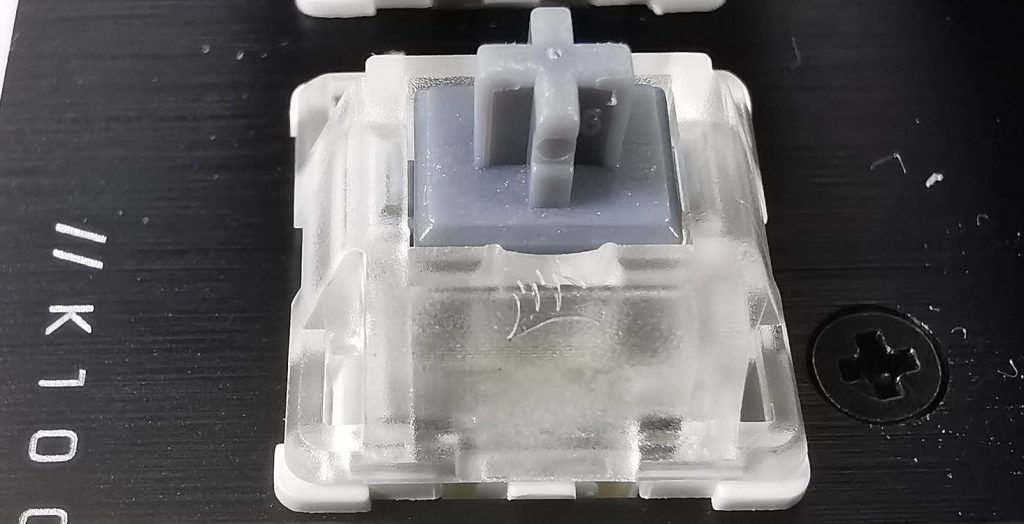
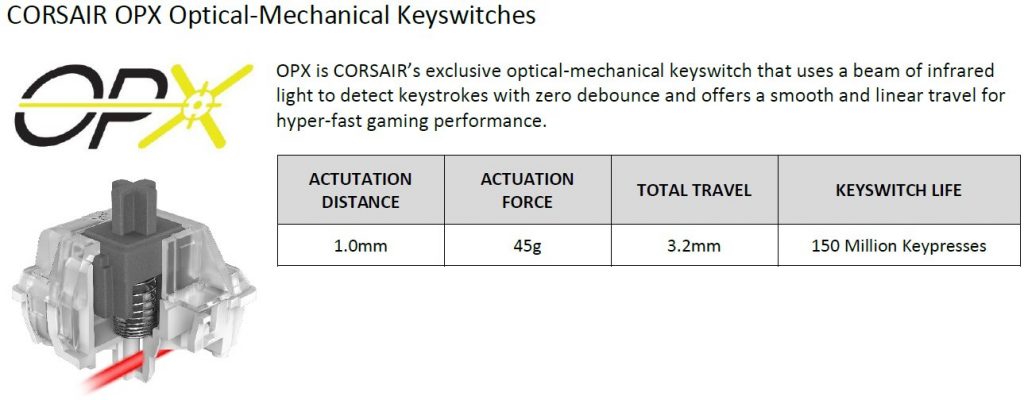
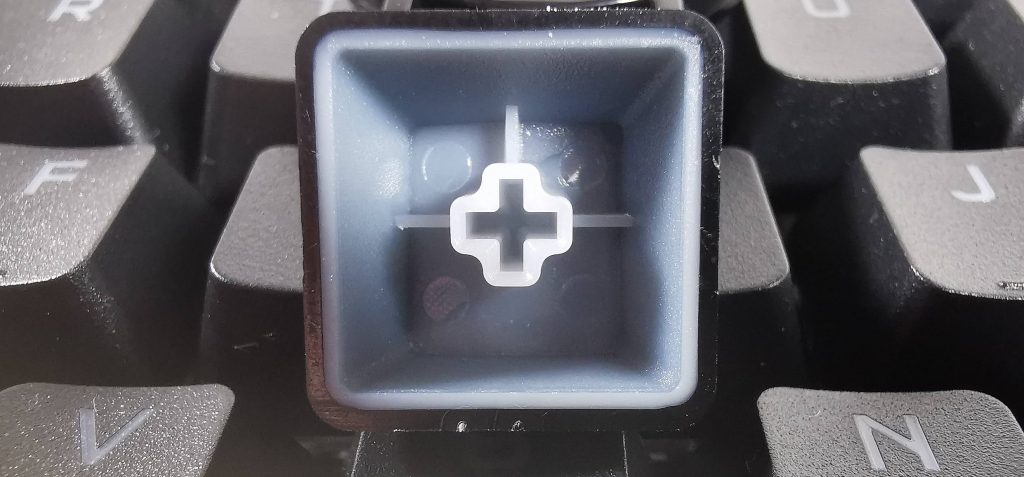

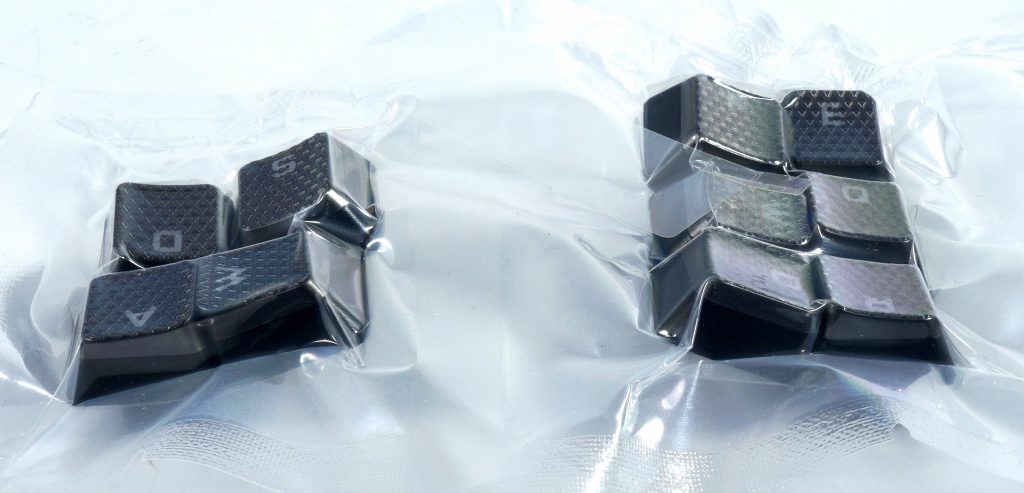
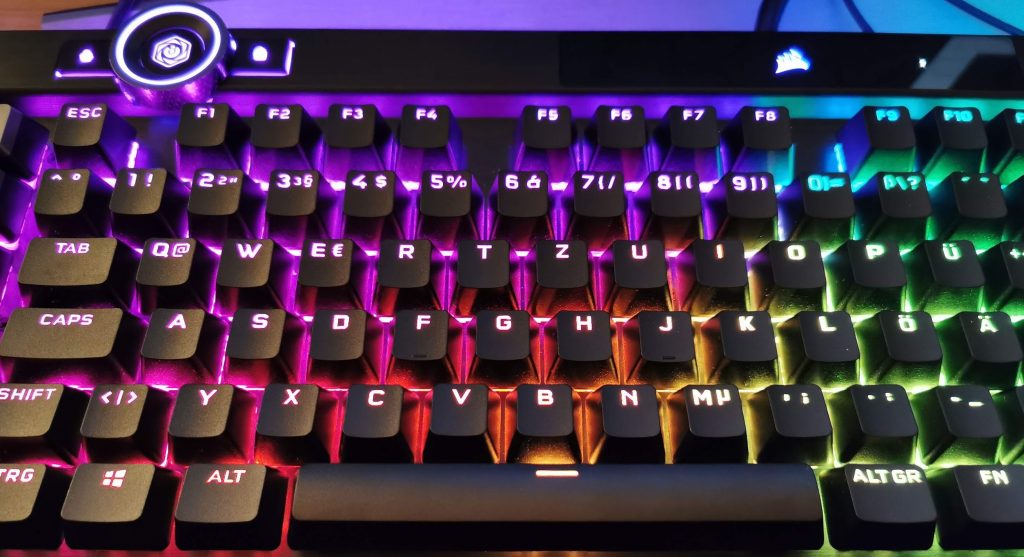

















Kommentieren